“The Earth lifts its glass to the sun
And light–light is poured.
A bird comes and sits on a crystal rim
And from my forest cove I hear singing.
….An emerald bird rises from inside me
And now sits upon the Beloved’s glass.
I have left that dark cave forever.
My body has blended with His.
I lay my wing as a bridge to you
So that you can join us singing.”
‘The Crystal Rim’ from ‘The Gift–Poems by Hafiz’
Translated by Daniel Ladinsky
Like pearls from an ancient lover’s gift, Magdalene sites and legends lie cast across a vast expanse, reaching from Ethiopia, Palestine, Egypt, France and north to the highlands and isles of Scotland. Crumbling chapel ruins, great Gothic cathedrals, caves, symbols carved in stone, and stories of her coming and going remain like fragments of an old story necklace, waiting and waiting and still waiting to be found.
Magdalene can currently be seen rising out of a long, imposed sleep. Like the story of Sleeping Beauty, she and her people have been ‘drugged’ into unconsciousness for two thousand years, by an extraordinary effort to suppress ‘the other half of the story’, Her story. From the moment that Peter’s Church formed the ‘rock’ and foundation of Christianity, she was written out of accepted doctrine, save for references to her as sinner, a woman from whom seven devils were removed by Jesus, and the one who dried the sweat on his body with her long hair. Peter’s religious authority stemmed from the church’s acceptance that he was the first disciple to see Jesus appear after the crucifixion. Yet, three of the gospels claim that Magdalene was the first to see him in the Garden. The sacred Grail pattern, that requires presence of the feminine, was severed at the core during the founding of the Church, yet the pieces are revealing themselves to any who choose to awaken.
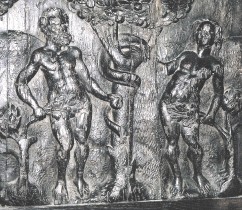
The Re-emergence of The Magdalene
“Mary is rising…she is rising to her heights…
Our Mary will not be cast down and bound up…
and neither will her daughters.
We will rise, Daughters. We…will…rise.”
‘The Secret Life of Bees’ by Sue Monk Kidd
The following introduction was written in 2003-2004, following the release of Dan Brown’s best-selling novel Da Vinci Code. With the extensive news coverage on Mary Magdalene at that time, her story has become widely accepted for most of the world. The retrieval of her true identity has come a long way in the last two thousand years, including an amazing recognition of her in 2017 by Pope Francis to the Vatican: “…an apostle of our new and greatest hope”.
One of many recent dramatic appearances from Mary Magdalene is ‘Jesus, Mary and Da Vinci’ , the ABC Primetime news show that has people buzzing nationwide. The show that first aired on November 3rd, looks at the questions of the true relationship between Magdalene and Jesus as companions and possible intimates. The film acknowledges her status as ‘the Apostle of the Apostles’, not the penitent prostitute that has been her ‘scarlet letter’ for two thousand years. Also presented is the symbolism in ‘The Last Supper ‘ painting by Leonardo Da Vinci, and his portrayal of Magdalene sitting at the right side of Christ, their two body positions forming a ‘V’, a feminine symbol and a chalice. Here are two excerpts from the ABC network show:
“There’s no factual basis for that longstanding tradition
that Mary Magdalene was a prostitute, a woman of ill repute….
Mary Magdalene is one of the greatest saints in the history of the church.”
Rev. Richard McBrien PhD, of Notre Dame University.
(Magdalene’s designation as prostitute was
officially reversed by the Catholic Church in 1969).
“I think it’s entirely plausible to think
that Jesus may have been married.
It was a normal practice for Jewish men.
It would also be normal not to mention that he had a wife.”
Karen King, Harvard University Professor
I was struck by my granddaughter’s epiphany as she watched the program, realizing that if Jesus and Magdalene really did have children, she herself might actually be carrying that same bloodline. That is quite a different legacy than thinking we are ‘less than’ or even worse, ‘sinners’!
“From the beginning, her view has been ignored, unappreciated.
Yet she remains. She cannot be silenced.”
Time Magazine Aug. 11, 2003
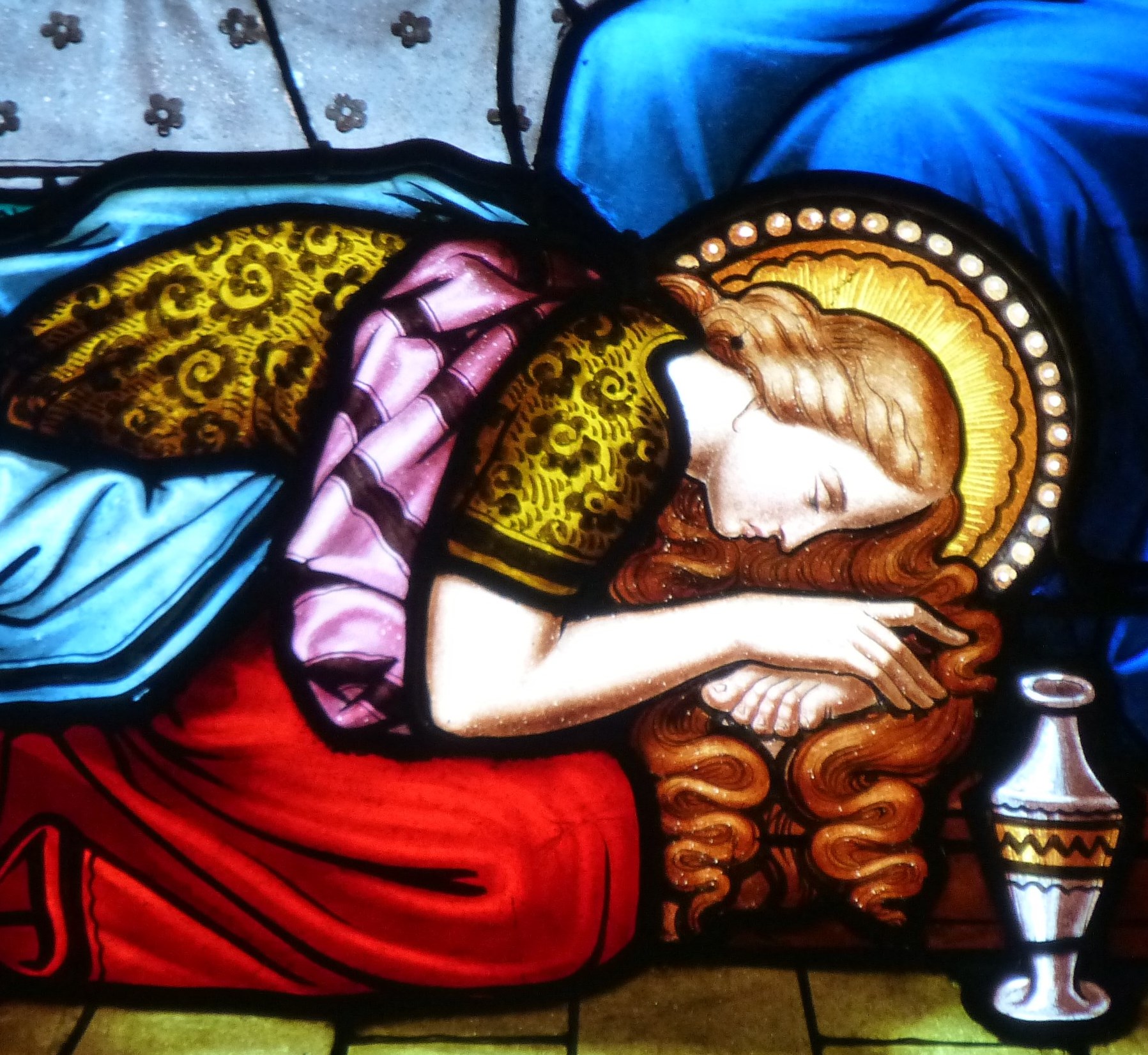 Other recent appearances include a feature article on Mary Magdalene in the August 11, 2003 issue of Time Magazine, and the popular novel, ‘The Da Vinci Code’, by Dan Brown, still scoring high on the New York Times bestseller list, along with numerous other Magdalene books released this year–all indicating her potent matrix is weaving its way back into our psyches. Through film, literature, revealed documents, and a growing interest in her story, Magdalene is finally rising from the hidden caves of our unconscious. She is re-emerging out of two thousand years of denial, banishment and a mistaken identity, to realize the fulfillment of a sacred trust, the blueprint for love and sacred union.
Other recent appearances include a feature article on Mary Magdalene in the August 11, 2003 issue of Time Magazine, and the popular novel, ‘The Da Vinci Code’, by Dan Brown, still scoring high on the New York Times bestseller list, along with numerous other Magdalene books released this year–all indicating her potent matrix is weaving its way back into our psyches. Through film, literature, revealed documents, and a growing interest in her story, Magdalene is finally rising from the hidden caves of our unconscious. She is re-emerging out of two thousand years of denial, banishment and a mistaken identity, to realize the fulfillment of a sacred trust, the blueprint for love and sacred union.
The Grail Romances and Medieval Madonnas
Why all this sudden emergence of her story now? I believe she is calling us to reclaim the sovereignty and emancipation of the human soul, at this beginning of the second millennium and a crucial turning point for Earth. During the first two centuries of the first millennium, 1000-1300 AD, it was an earlier cycle of change and radical breakthroughs, filled with fresh new idealism, a renaissance of spirituality and time of the Christian Crusades. Passionate expressions of artistic flowering, rising ideals of romance, individual freedoms, and women’s equality spread like fire across Christian Europe. This was the period of the writing and popularity of the Grail Romances, Courtly Love, the song and story ministry of the Troubadours, formation of the Knights Templar, guardians of the Grail and Magdalene mysteries, and the devout order called the Cathars (from the Greek ‘Katharos’ meaning pure) protectors of the Grail legacy and the sacred union of Jesus and Magdalene.
It is important to mention here Eleanor of Aquitaine, who was one of the most powerful, liberated and influential women of the medieval era. Her passionate support of the arts, courtly love and women’s freedom, fueled significant change as well as incurring for herself many ‘Magdalene’ labels. She was the only woman to be Queen of two countries with her marriages first to King Louis VII of France and then King Henry II of England, by whom she gave birth to two future kings, Richard the Lionhearted and John ‘The Lackland’. Eleanor personally traveled to Jerusalem during the second Crusade and had close dealings with the Cathars and Knights Templar. It was Eleanor’s daughter Marie de Troyes, who was instrumental in the completion of Chretien de Troyes’ Grail Romance, Le Conte du Graal (1190 AD), the earliest known grail story in writing. Aquitaine, France was a hotspot for the Troubadours of Courtly Love and Eleanor and Marie created the controversial Tractus de Amore et de Amoris Remedia (Treatise on Love and the Remedies of Love), including 31 codes of romantic conduct for educating her male subjects in the romantic requirements of the newly emancipated women.
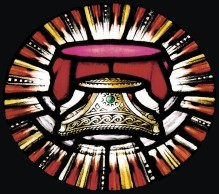
During this same period, there was a sudden rising interest in the schools of Hermetic and Egyptian secret alchemical knowledge. It was also in this era that several hundred Black Madonnas were placed in chapels and cathedrals reaching beyond Medieval Europe to the east into Russia, and north to Britain. Ean Begg, author of ‘The Cult of the Black Virgin’, says that many of these Black Virgins were brought out of the near east by the Knights Templar. Author Lynn Picknett (‘Mary Magdalene’ and ‘The Templar Revelation’), feels that Magdalene may have even come from Ethiopia, a dark-skinned, powerful and wealthy queen. These dark-colored mother and child images are often associated with Isis and Magdalene cults, the dark Mother Goddess nourishing her children, and associated with the hidden mysteries of the sacred marriage or Hieros Gammos and the alchemy of high sexual magic. Similar ‘madonna’ images can be seen in Egyptian temple scenes with Horus at the breast of his mother Isis.
Solomon and Sheeba’s ‘Song of Songs’
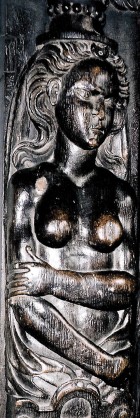 Image left: Rosslyn Chapel Crypt
Image left: Rosslyn Chapel Crypt

Between 1100-1300 AD hundreds of Gothic Cathedrals were constructed, fired by the mystical visions of St. Bernard of Clairvaux and his close involvement with the Crusades and the formation of Order of Knights Templar. It was St. Bernard who wrote the first Templars’ Rule, during their formation in Jerusalem in about 1118 AD and played a key role in their official papal recognition at the council of Troyes in 1129 AD. (More on the Templars later). Templar symbols are found carved in these Gothic edifices, a rare fusion of Pagan and Christian roots, alluding to the alchemical sciences of sacred geometry, sound, astrology, genetics and the technology of transformation. These great Gothic cathedrals, such as the ones at Chartres, Notre Dame in Paris, Salisbury, St.Denis, and Cluny were dedicated to Notre Dame, Our Lady, thought originally to be Magdalene. Most were also home to the Black Madonnas.
‘Dance of the Dragon’ by Paul Broadhurst and Hamish Miller (The authors discovered many of these cathedrals are located on a major energy grid they call ‘The Apollo- St. Michael axis’, and stretches from Britain’s St. Michael’s Mount to Mt. Carmel)
The sacred architecture employed in these majestic structures reflected a new ‘alchemical light and specific acoustical properties’, according to ‘Dance of the Dragon’ authors, that was conducive to the constant rounds of perpetual choirs maintained by the monks. Interestingly, it is precisely at these millennium shifts, when perpetual chanting becomes a device of the collective creative intention. Sacred music and chant is always with us, but surges in its necessary popularity at these crucial turning points, as during the inception of Christianity in the first century AD, during the beginning of the first millennium, and now as we forge a new paradigm and write our ‘script’ for the next one thousand years.
If we read between the historical lines, a pattern can be seen here, with an inner circle of key players stirring the pot of change. These courageous and inspired pioneers of the Spirit were laying the foundation for a future second millennium renaissance. Now is the time for us to remember the true story of our tribal myth, a story that embraces the Holy Grail of union, love and beauty–a story that calls us to become empowered, whole and fully human.
 Magdalene As Jesus’ Initiatrix
Magdalene As Jesus’ Initiatrix
…the sacred union of Jesus and his Bride once formed the cornerstone of Christianity….the blueprint of the Sacred Marriage, that the later (church)builders rejected, causing a disastrous flaw in Christian doctrine that has warped Western civilization for nearly two millennia.”
Margaret Starbird, ‘The Goddess in the Gospels’
Let us look at the following significant transition or initiation points in Jesus’ life that indicate Mary Magdalene was not only present, but was the one who performed the most important ancient rituals, or rites of passage for Jesus. These rites would have been performed only by one initiated into the deeper mysteries, one who would have commanded a key position in the unfolding drama:
- Magdalene anoints Jesus with her alabaster jar of spikenard prior to his being captured and crucified, seeming to know the overall plan before it was clear to the other disciples. The following excerpt from Solomon’s Song of Songs, 1:12, implies that Magdalene was following a much more ancient ritual tradition in which the Bridegroom, or King is anointed by the Bride or High Priestess and this rite most likely even predates the passionate love poems of Solomon and Sheeba.
‘While the king sat at his table,
My spikenard sent forth its fragrance.
My beloved is unto me as a bundle of myrrh,
That lieth betwixt my breasts.’
- The Magdalene is present, along with Jesus’ mother Mary, the disciple Salome, and John the Beloved at the cross, when the other disciples were in hiding–too overcome with grief and fear to even appear! (According to Magdalene / Templar historian and author Lynn Picknett, when Magdalene goes back to find the male disciples and rally them out of their fear and total hopelessness after the crucifixion, she actually gave the church to Peter, although as the companion of Jesus, the ministry should have reverted to her!)
but what he kept from you.”
Elaine Pagels quoting Magdalene from the
Nag Hammadi Gospels on ABC’s ‘Jesus, Mary and Da Vinci’
- Magdalene and Mary the mother anoint Jesus’ body with specific unguents, ones known to alchemically aid in Christ’s after-death journey, and then wrap his body in linen in preparation for burial….certainly a task only to be entrusted to the ones closest to him.
- In three of the Gospels, Magdalene is the first one that Jesus appears to after the crucifixion. Jesus then says, ‘Noli mi tangere’, or ‘do not cling to me’, and as Margaret Starbird comments, the Greek translation of tangere, meaning ‘cling’ implies a more intimate relationship between them, rather than the Latin to ‘touch’.
- According to the ‘Pistis Sophia’, a Gnostic text in which Jesus makes a grand reappearance after the crucifixion and teaches the disciples deeper inner mysteries, it is Magdalene’s presence which dominates this dialogue with Jesus, and both her questions and answers indicate an ‘Apostle who knew the All’.
 ‘Mariham (Magdalene),this whom I shall complete in all the mysteries of the things of the Height. Speak in Boldness, because thou art she whose heart straineth toward the Kingdom of the heavens more than all thy brothers…you who will give light upon everything in accuracy and in exactness.’
‘Mariham (Magdalene),this whom I shall complete in all the mysteries of the things of the Height. Speak in Boldness, because thou art she whose heart straineth toward the Kingdom of the heavens more than all thy brothers…you who will give light upon everything in accuracy and in exactness.’Spoken by Jesus, from the Pistis Sophia texts,
quoted in the book Mary Magdalene by Susan Haskins.
It appears that Magdalene continued the ministry that embraced the original purpose of Christianity in the years following the crucifixion. There are records of her having preached her message on the steps of the Temple at Marseilles dedicated to the Goddess Diana, and that she had a strong following in southern France. Legends of her escape from Palestine to Egypt, France and a further journey to Great Britain include her bearing the children of Jesus, being the fiqure-head of the Magdalene-Isisian Mystery Schools, and her retreating into the deep caverns of France and the areas around Rennes le Chateau, Rennes les Bains, and even into Glastonbury, England, the coast of Wales, Edinburgh, Scotland, and the Isles of Mull and Iona.
The Knights Templar–Guardians of the Holy Grail
 “She walks upon our meadows green, the Lamb of God walks by her side,
“She walks upon our meadows green, the Lamb of God walks by her side,
And (in) every English Child is seen, children of Jesus and his Bride.”
‘Song of Jerusalem’ by William Blake
In 2003 I had recently returned from another journey to Scotland and England, pursuing the legends and history of the guardians of the Grail mysteries and Magdalene’s legacy, the 12th to 14th century Knights Templar. These Knights were the most powerful military, political-financial and spiritual force of Medieval Europe, consulted by kings, popes, and anyone else choosing to be on the inner power circles of that era. Their realm of influence reached from the Holy Land, the entire near east, Cypress, Malta and throughout what is known today as Europe and Great Britain. The Templars were known for their extensive fleets of ships, and were involved in transporting people, trade items and sacred relics, to the far reaches of the western world, similar to the much earlier Phoenicians.

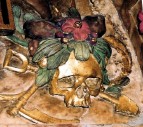
the keepers of the secret of the rose within the chalice.”
‘The Sword and the Grail’ by Andrew Sinclair
The Templar Order was formed ostensibly in Jerusalem, 1118 AD, or perhaps a century earlier, with nine members, ostensibly to guard the safety of traveling pilgrims. Although nine Knights is hardly a sufficient number to guard the thousands traveling during the Crusades between Jerusalem and France. These nine knights were members of France’s wealthy elite families and well-connected with power. Strangely, they were immediately granted posh living quarters at El-Aqsa Mosque, on the site of the old Temple of Jerusalem, and rare permission to excavate the deep vaults below. (They are also called the Knights of the Order of the Temple of Solomon). Some researchers claim they found ancient scrolls, the Holy Grail and even the Ark of the Covenant. Laurence Gardner, author of ‘Lost Secrets of the Sacred Ark’ says that by 1127 AD, the Templars had found the Ark, and along with other untold Temple treasures, brought them back to France. Perhaps secret Masonic building codes discovered in Jerusalem fed the rise of the new heights of architectural mastery in the Gothic cathedrals. I suspect that a much older mystical organization lies at the roots of the Knights Templar, an order that was guarding some very powerful and ancient secret knowledge.
The incredible flowering of the Grail mysteries that rose during the 11th and 12th centuries was squashed by the horrific Inquisition, initiated by Phillip IV, King of France and Pope Clement in order to purge Europe of its heretics. The influencial Templars lived outside of the law, and had gained more power and popularity than was ‘safe’, according to the rulers of church and state. The Inquisition officially began Friday, October 13, 1307, marked by the arrest, imprisonment and torture of thousands of Knights Templar, and punctuated by the 1314 burning at the stake in Paris of Templar Grand Master, Jacques de Molay. A tremendous cache of ancient relics and possible scrolls from Jerusalem, gold and other treasure, was stored in the Templar’s vaults in Paris. Many believe these were secreted out of France during this time, on Templar fleets bound for the safety of Templar-friendly England and even more remote Scotland. King Robert the Bruce was the ‘braveheart’ and grand heretic (already excommunicated by the Pope), of the wild and rebellious Scots, who received the Templars with open arms. The Templars are thought to have joined forces with Bruce, and defeated the English at the famous Battle of Bannockburn. This battle was a turning point for the Scottish rebellion, and England finally recognized Scotland as an independent nation, and Robert The Bruce as their king.
Rosslyn’s Secret Codes in Stone
Mary Magdalene is said to be the patron saint of the Knights Templar, and numerous signs of her presence can be found in Scotland, including indications of her children and a Celtic Magdalene bloodline! Our recent journey to Britain began at Rosslyn Chapel, near Edinburgh, just days behind the ABC ‘Jesus, Mary and Da Vinci’ documentary film crew, …all of us hot on the trail of discovery. This mysterious chapel, is often referred to as a ‘Bible in Stone’, or ‘Chapel of the Grail’, perhaps built with the Chapel Perilous in mind, mirrors Jerusalem’s Temple of Solomon design. The building of Rosslyn was begun in 1446 and completed forty years later, by Sir William St. Clair, the third and last Prince of Orkney. Members of the Sinclair family claim to be descendants of the Davidic, Merovingian bloodline, through the children of Jesus and Magdalene.

The prolific symbolic carvings in Rosslyn, many of which relate to the Knights Templar, present a striking integration of both Christian and Pagan motifs. According to Karen Ralls former assistant curator of Rosslyn, in her book ‘The Templars and the Grail’:
“Templar, Masonic, Rosicrucian and Christian symbolism….are woven throughout…In many ways, the carvings at Rosslyn Chapel are about the interplay of opposites and complements…light and dark, male and female, life and death.”
According to Andrew Sinclair, member of the St. Clair/Sinclair clan, the name Rosslyn “….is said to derive from the old Scottish ROS-LIN or Rosy Stream, suggesting the blood of Christ.” One of the persistent legends regarding Rosslyn is that the Holy Grail is buried within the Apprentice Pillar inside the chapel – possibly the same grail or cup which contained Christ’s blood and is said to have been carried by Joseph of Arimathea from Jerusalem, through France to Britain. Could this Grail brought by either Joseph of Arimathea, or the Templars out of the Holy Land, have finally ended up at Rosslyn?


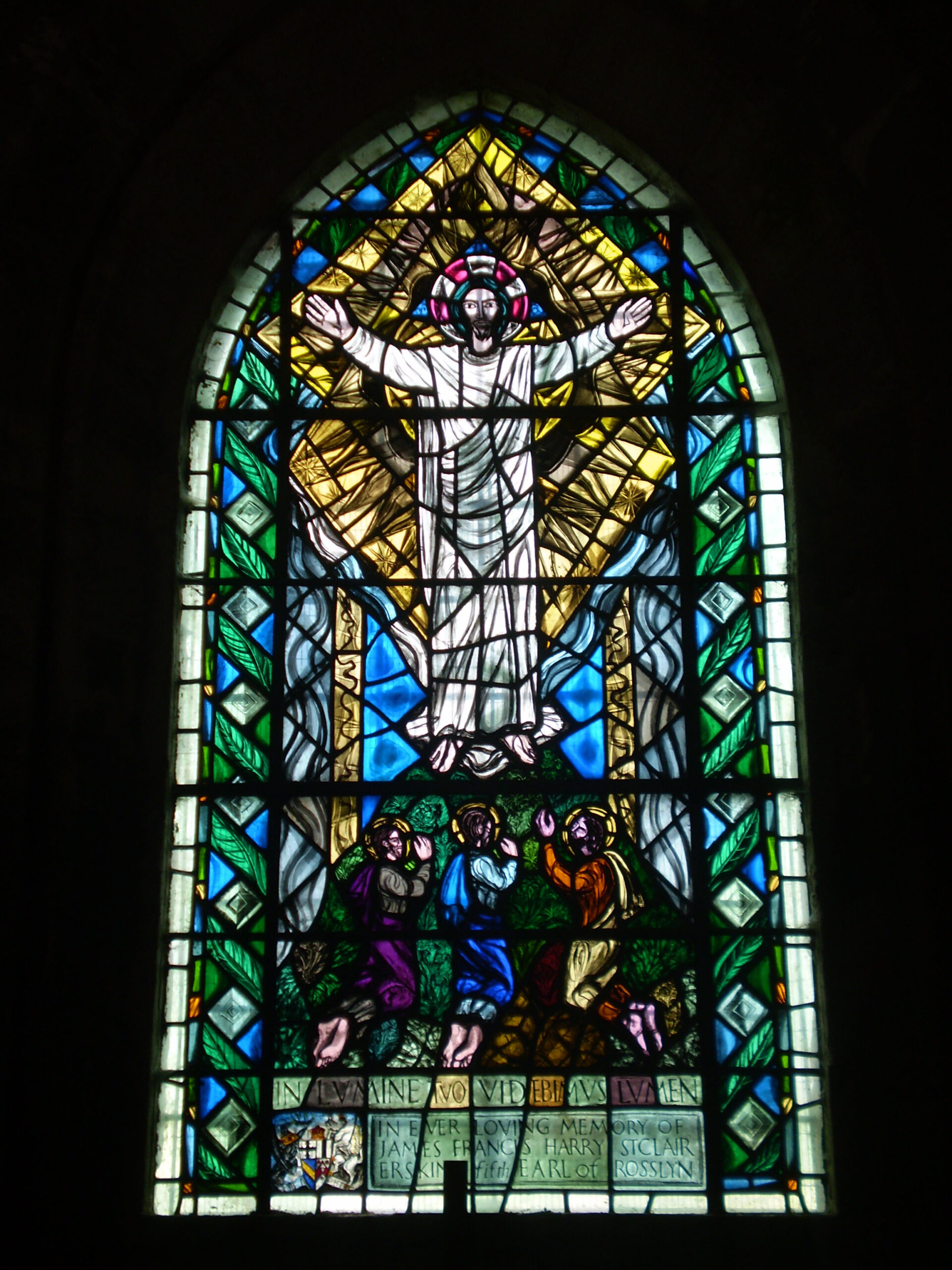
Other sacred and precious items originally from Solomon’s Temple and Medieval Europe, brought north for safe-keeping (out of reach of the hands of the Europe’s ‘power brokers’) are said to have been placed at Rosslyn. “The Ark of the Covenant, the mummified head of Christ, the Holy Grail, lost scrolls from the Temple of Jerusalem, Templar Order treasures….a Black Madonna and more have been thought to lie within its vaults.” Karen Ralls “The Templars and the Grail”. (Some others say the Templars’ grail head is that of John the Baptist). The Sinclair family history also speaks of the Holy Rood, a piece of the original crucifixion cross, being carried to Rosslyn and buried within its vaults.
Sacred Sites and Nature’s Temples
Many significant pilgrimage sites across the world are built upon the ruins of earlier temple structures, the locations chosen strategically for the natural earth-spirit currents already present. Common to spiritual centers such as Chartres, Glastonbury, Rosslyn, Iona, Glen Lyon, Sedona, and Mayan and Aztec pyramids, we find numerous crossing energy currents, or ley lines, underground water streams, caves and places of great beauty and power. These are places of pilgrimage, spanning thousands of years. This is certainly the case with Roslin Glen with its winding River Esk, many caves and rare varieties of flora. When walking through the glen, one senses that this is a place of both sanctity and magic, and it is this sense of the sacred that provided original inspiration to build temples at these locations.
Rosslyn Chapel’s carvings read like a 3-D dictionary of numerous varieties of flora, including mysterious representations of aloe (or agave) and maize. The prolific images of plant and flower varieties found in many Templar-related sites reflect some varieties flora unknown in the north, but native to the Middle East and beyond. The Sinclair clan claim that their ancestor, Prince Henry Sinclair sailed to America in the last decade of the 1300’s, about 100 years before Columbus (whose ships flew the Templar banner with the flayed red cross), and founded Templar sites in Nova Scotia, Rhode Island and Virginia.
Magdalene and the Mary Chapels
Barry Dunford, author of ‘Holy Land of Scotland’, who we interviewed in Fortingall, Scotland spoke about the Mary Chapels and alignments through the heart of Scotland. He said there is a straight line connecting Montrose (mount rose), on the eastern coast, through the St. Mary Churches at Grandtully and Fortingall to the western Isle of Iona. Another alignment runs from the east at Marywell, through Fortingall to Tobermory (Well of Mary), close to another key Mary Chapel at Dervaig, Isle of Mull. These lines indicate an ancient pilgrim’s path, full of ‘birthing Mary’ images and legends.
 |
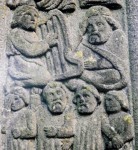 |
 |
The St. Mary’s Church at Grandtully has a wooden ceiling mural (c. 1636 AD) depicting numerous Templar and Grail images. Included are two pregnant, female ‘angels’, a Grail Knight, a unicorn and lion, and the Judgement Tarot card including skulls and the black and white checkered floor, similar to the Templar ‘beauseant’ banner.

St. Mary’s Church, Grandtully
Interestingly, this unusual Medieval painting of a Grail Knight at St. Mary’s Grandtully Church was commissioned by Sir William Stewart and the Royal House of Stewart claim to carry the Holy Davidic Grail Bloodline and both these lineages claim the unicorn as their symbol.
Following on the ancient pilgrim’s path toward the Isle of Iona, one must cross the Isle of Mull, a naturalist’s paradise. In Kilmore (Kil=church More=Mary) Church at Dervaig, Mull, there is an intriguing stained glass window image, which could be Jesus with a pregnant Magdalene! The stained glass window was made circa 1905, when the present church was built, although a much older Druid site was there before, as the adjacent stone circle indicates. Barry Dunford pointed out that if, as the local Christians believe, the window depicts Mother Mary and Joseph, then Mother Mary would have the halo and Joseph would not. In this image however, the male figure has the halo, and this would indicate it is Jesus and obviously not with his pregnant mother, but holding hands with a pregnant Magdalene. A striking connection here is that the commissioning of this window appears to be by a Thomas Eversfield, named on a church plaque, and displaying two Templar crosses. Was Eversfield a member of the Knights Templar and privy to secret information regarding the Holy Grail Bloodline?

Just across the sound from Mull, lies the Isle of Iona, once called Innis nan Dhruidhanean, the Isle of the Druids, with several legends speaking of Magdalene’s giving birth to a child, and living her last days in a cave there. There is a crumbling ruin of an old Mary Chapel behind the great Abbey, where the presence of Magdalene is still palpable. It is said that on the Isle of Iona, the veil between earth and heaven are so thin that pilgrims here can easily access spiritual dimensions.
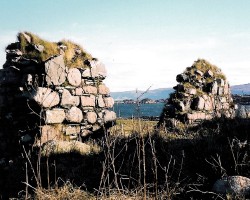
Just behind the Abbey is a hill called Dun-I, where legend says St. Bride sang love songs daily, calling to her lost Bridegroom. According to Fionna Macleod, author of‘Iona’, two old prophecies say that Christ shall come again upon Iona and when ‘she’ returns, it will be as the Bride of Christ, the Daughter of God.
As Christian mystics and pilgrims traveled the paths between these spiritual sites, they would ultimately journey southwest to Rosslyn and Edinburgh. During our meeting with Robert Brydon at Temple Village near Rosslyn, he mentioned an important early chapel dedicated to Magdalene in Edinburgh, known throughout the western kingdoms as a fertility site, where women would send items to be blessed for healthy, successful births. I reflected again on my granddaughter’s liberating epiphany while watching the ‘Jesus, Mary and Da Vinci’ film, regarding the genetic inheritance of Holy Blood, and what this Scottish presence of Magdalene and birth associations could mean for a Celtic Grail Bloodline!
The Rose of Rosslyn
‘…I flame above the beauty of the fields; I shine in the waters;
In the sun, the moon and the stars, I burn.’
Hildegard of Bingen
The Rose with its word anagram ‘Eros’, has long been associated with ‘Our Lady’, whether she be in her role as Mary the Mother, Magdalene the Lover, or Saint. It is also associated with the heart of Christ, the Rose of Sharon. The five-petalled rose, Rosa Rugosa, is the earth’s oldest known variety of rose and is a repeating symbol present at many Templar church sites that we visited.
The unusual solid stone barrel-shaped ceiling of Rosslyn Chapel is divided into five sections, and is covered with carved five-pointed stars, lilies, roses and other flowers. These stars have an ancient association with Venus, Isis and Magdalene and are also found on the ceilings Egyptian temples. (The pentagram’s proportions are a perfect example of the Golden Mean, or PHI ratio, and the sacred geometry used in ancient temple architecture). Another section of the ceiling containing a series of cubes is said to correspond to PHI and a Fibonacci musical scale. As luck would have it, a Hungarian Medieval music group and choir was performing in Rosslyn while I was there.
Barry Dunford says that Roslin (older spelling) refers to the Rose Line, an energy alignment running through Rosslyn and connecting southward on the early mystic’s pilgrimage route to Avalon and ultimately to Santiago de Compostela (translating as field of stars) in Spain. In fact, the clamshells received as confirmation that one had truly accomplished the long road to Compostella, are still left as offerings on an altar stone within Rosslyn Chapel.
Rosslyn and Signs of a Holy Grail Bloodline
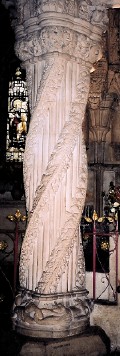
Three famous pillars stand at the front of Rosslyn Chapel: The Master Mason’s pillar, the Journeyman’s pillar and the Apprentice pillar, said to represent Wisdom, Strength and Beauty. At the top of the Mason’s pillar are carved angelic musicians. At the base of the Apprentice pillar are eight dragons, from whose mouths come vines, which spiral up and around the pillar, said to represent the Scandinavian myth of eight dragons, who lie at the base of Yggdrasil, the Ash Tree that binds together heaven, earth and hell.
Legend states that the gifted apprentice, who carved the extraordinary detail of the Apprentice pillar was murdered by his jealous master. We find a similar story and great intrigue, regarding the demise of Hiram Abif, the Master Mason of Solomon’s Temple in Jerusalem. What Hermetic secrets were these ancient masons protecting? Rosslyn Chapel’s only complete inscription appears on the lintel connecting the top of the Apprentice pillar to the south wall, and is carved in Latin on a spiraling ribbon of stone.
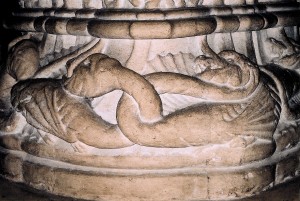

The English translation follows, as quoted in Robert Brydon’s 2003 Rosslyn Chapel Trust booklet ‘Rosslyn and the Western Mystery Tradition’:
SUNT MULIERS SUP (ER) OM (NIA) VINCIT VERITAS’
‘WINE IS STRONG; THE KING IS STRONGER; WOMEN ARE STRONGER,
BUT ABOVE ALL TRUTH CONQUERS.’
According to Brydon, this inscription refers to the words and wisdom of ZERUBBABEL, of the lineage of the Royal House of David. In the year 536 BC, the people of Judah were released from their captivity in Persia, and under the leadership of Prince Zerubbabel, they all returned to Jerusalem, and began the building of a new temple upon the ruins of the old Temple of Solomon. Is this fantastic inscription on the arch next to the Apprentice pillar telling of a Scottish or Sinclair connection with the Davidic-Grail bloodline? Is it reminding us that without embracing the feminine, that truth is out of reach?
 Four arches radiate from the Master Mason’s pillar and four more from the Apprentice Pillar, each with 64 cubes, perhaps alluding to the 64 genetic chromosomes. These cubes have also been related to musical scales, indicating a musical composition to be sung in the chapel. Along with the DNA spiral symbolism on the Apprentice Pillar, this theme is mirrored ‘coincidentally’ in Rosslyn’s nearby genetic farm, where the world’s first cloned sheep and chickens were created! Is all this an uncanny allusion to genetics of a grail bloodline or the alchemical secrets of life contained in the blood and guarded by the Knights Templar, Guardians of Magdalene’s legacy?
Four arches radiate from the Master Mason’s pillar and four more from the Apprentice Pillar, each with 64 cubes, perhaps alluding to the 64 genetic chromosomes. These cubes have also been related to musical scales, indicating a musical composition to be sung in the chapel. Along with the DNA spiral symbolism on the Apprentice Pillar, this theme is mirrored ‘coincidentally’ in Rosslyn’s nearby genetic farm, where the world’s first cloned sheep and chickens were created! Is all this an uncanny allusion to genetics of a grail bloodline or the alchemical secrets of life contained in the blood and guarded by the Knights Templar, Guardians of Magdalene’s legacy?
Indications are that it is quite possible that Magdalene and Jesus did have children. Magdalene and/or her children could have come as far north as Britain after the crucifixion, and if they did, there could be a Northern Celtic Holy Bloodline, which spread a Christ-Mary genetic inheritance throughout the Western world.
I do believe Magdalene is calling us to reclaim the sovereignty and emancipation of the human soul, at the beginning of the second millennium and a crucial turning point for Earth. Now is the time to rewrite our global myth. The planetary alignment and lunar eclipse of November 8, 2003, with its six-pointed Star of David pattern is a powerful symbol for this re-integration of male-female, the alchemy of the union of opposites. Magdalene’s return signals a fusion of dimensions of consciousness fragmented for two thousand years, giving birth now to a potent healing force and opening the Grail of the Heart.
text and photos
©Ani Williams December 2003
The following CDs have songs
dedicated to Magdalena:
“Magdalene’s Gift—Songs to the Beloved“, “Garden of the Magdalene” , “Song of Sophia” , and “Medicine Song II”
See also the article featuring the Vatican’s proclamation that Mary Magdalene is our world’s new and greatest hope: Maria Magdalena

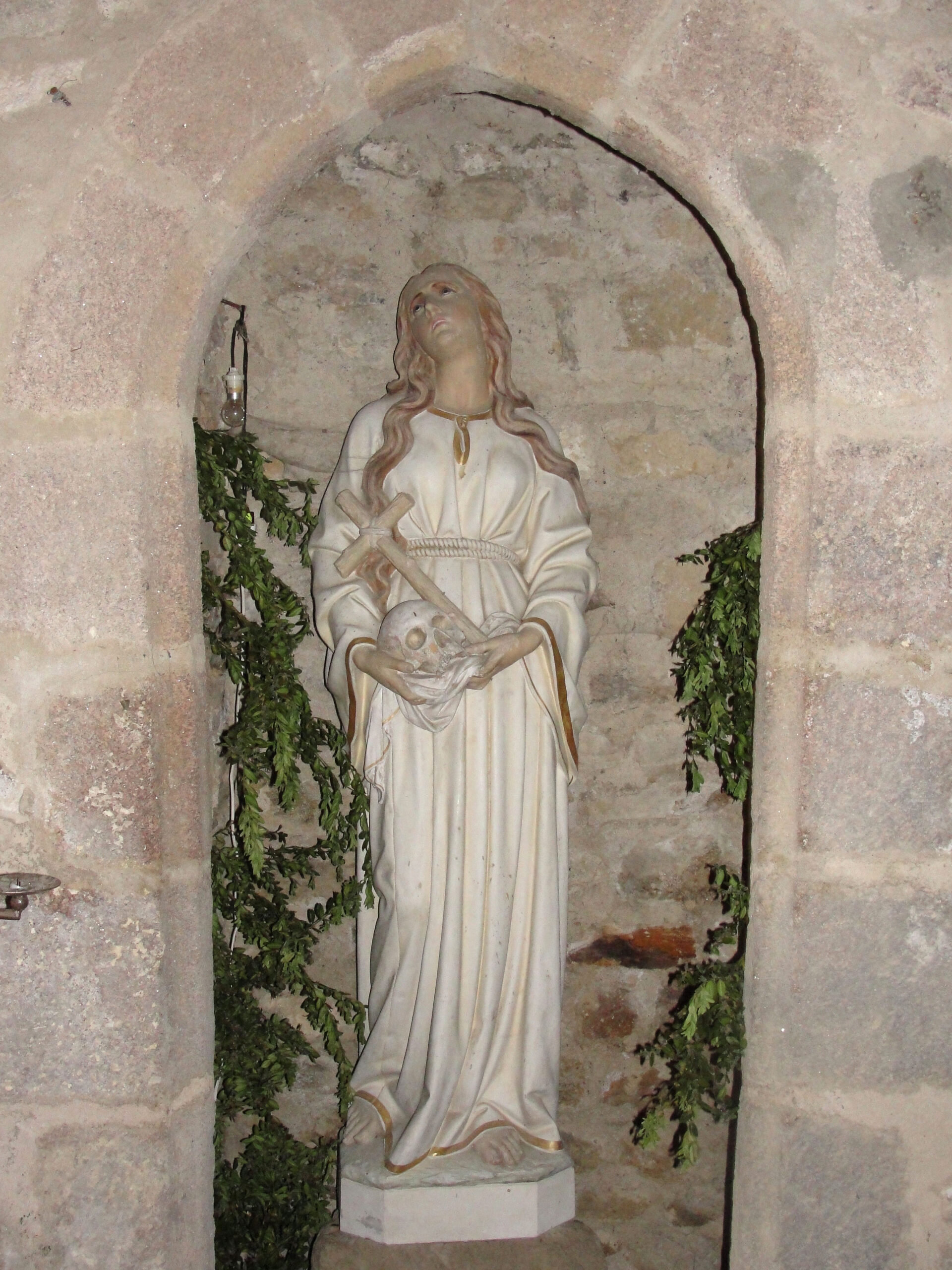 by
by 